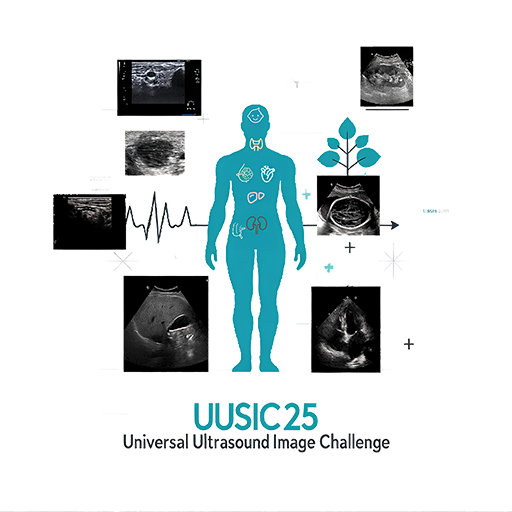Universal UltraSound Image Challenge: Multi-Organ Classification and Segmentation
A challenge accepted by MICCAI 2025, 23-27 September, Daejeon, Republic of Korea.
Participate Learn moreA challenge accepted by MICCAI 2025, 23-27 September, Daejeon, Republic of Korea.
Participate Learn more
Participants are required to submit a Docker image containing a single model capable of performing multi-task processing across multiple organs and diseases. The target organs include the breast, thyroid, liver, kidney, fetal head, heart, and appendix, which correspond to publicly available datasets we collected for redistribution.
Each organ is associated with a distinct clinical task, exemplifying the multi-disease and multi-task nature of the challenge. In addition to the public datasets, we will provide a small portion of our private datasets for training to mitigate domain gap difficulties. The validation and test sets will consist primarily of private data, which will not be publicly disclosed.
Our dataset is combined from multiple public datasets and several private datasets for ultrasound imaging. For the public datasets, detailed information about the data-acquiring centers or institutes can be found in the corresponding articles we have listed. Regarding the private data sources, they are from two hospitals: Hangzhou First People's Hospital, and the Netherlands Cancer Institute.
Data annotation is overseen by three experts in the field of ultrasound: Dr. Lingyun Bao, Dr. Dong Xu, and Dr. Ritse Mann. They have extensive knowledge and hands-on experience in ultrasound imaging and diagnosis.
As a condition for being ranked and considered as the challenge winner or eligible for any prize, the teams/participants must fulfil the following obligations:
The algorithm will be assessed using the following metrics, and all metrics will be used to compute the ranking.
Please contact us for further questions and comments via email at uusic2025@gmail.com